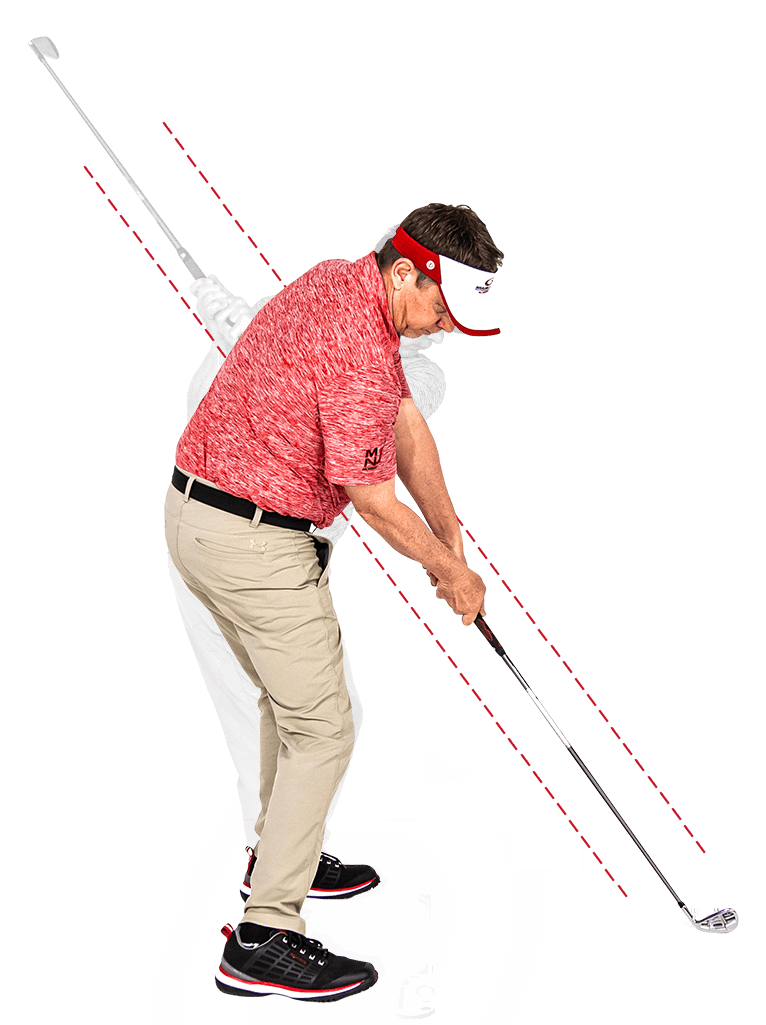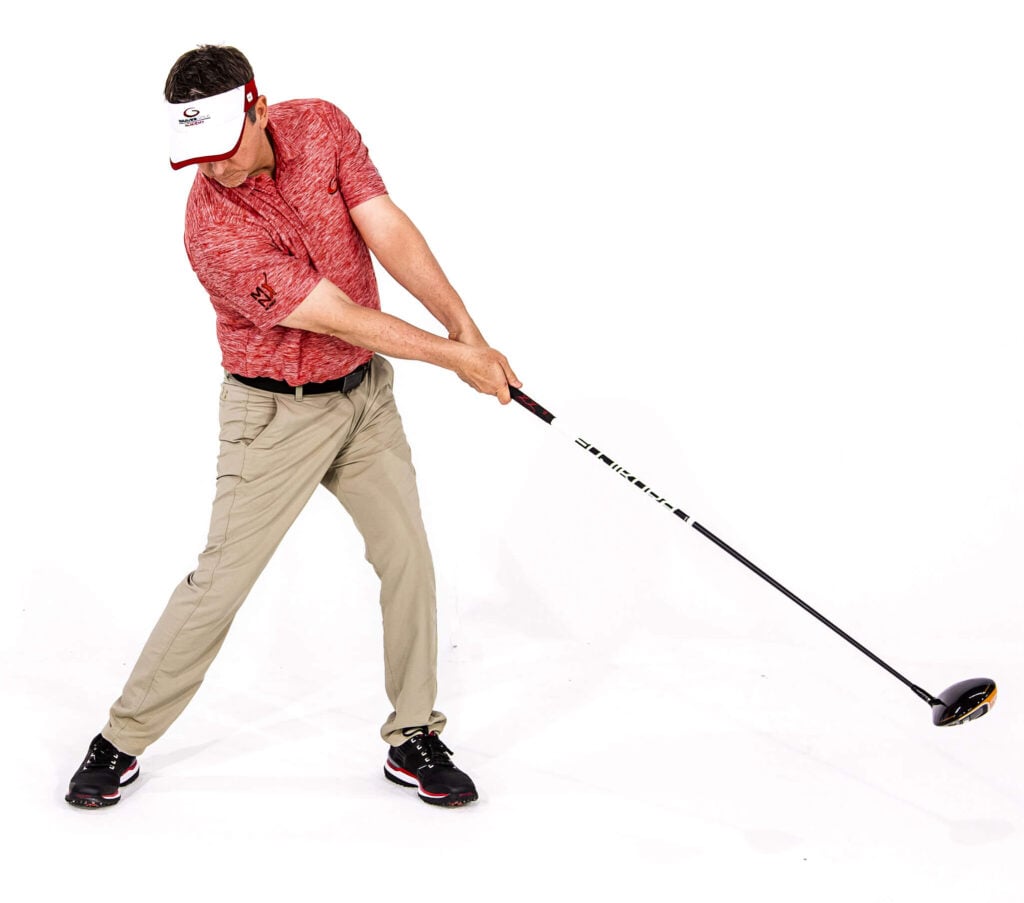
Why is the Single Plane Swing better?
Many great golfers have used a conventional swing…
But many more have ruined their back and their golf games using it!
To simplify the golf swing you must make the moment of Impact easier. The Single Plane Swing does this with More space from the ball, less rotation, less body movement and less stress on the body.
Here are the key differences…
Arms
Single Plane Swing


Conventional Swing
Arms hang straight down, on a different plane from the club– hence “Two Plane”
Hands/Grip
Single Plane Swing
The lead hand is in a neutral and released position (ulnar deviated) where the back of the hand is parallel to the clubface. The trail hand is placed in a non-rotational position–similar to skipping a rock.


Conventional Swing
Hands/Grip
Tilt of Body
Single Plane Swing


Conventional Swing
TILT
OF
BODY
FEET
Single Plane Swing
Feet apart for stability and farther away from the ball–provides room for the ideal high and natural impact plane


Conventional Swing
Feet close together and unnaturally close to the ball–means less stability and leaves little room for the higher impact plane for the club
Club Angle
at Address
Club Angle at Address
Single Plane Swing
Club starts at the mid-spine plane of impact. You start at the same angle as impact.


Conventional Swing
Club starts at a low angle, intersecting the hips rather than the mid-back. Lower than the impact plane.
Club Angle
at Address
Shaft
Angle
of Impact


Shaft Angle of Impact
Single Plane Swing
Club impacts on the same mid-spine plane. This is the same as at address, meaning less shaft lift into impact, meaning less compression on the back and spine.
Conventional Swing

Body Position at Impact
Single Plane Swing
The lead knee remains flexed and trail foot stays on the ground through impact. This reduces body lift into impact, which means less upward movement and stress into the lower back. This makes the Single Plane Swing easy on your back!
Conventional Swing
The lead leg straightens and body and trail hip lift and rotate up. As the upper body and shoulders rotate down, the whole body leans back. This is an unnatural, awkward, and stressful position for your back. No wonder so many golfers have back pain!

Body
Position
at
Impact


PAST
IMPACT
Past Impact
Single Plane Swing
The lead knee remains flexed and the trail foot on the ground, stabilizing the lower body keeping stress off the lower back. The extension of the club returns to the Single Plane.
Conventional Swing

Finish
Finish
Single Plane Swing
With the lower body stable and the upper body stabilized, the arms and shoulders rotate, returning the club to the Single Plane. Single Plane is easier
on the back.

Conventional Swing
With the body lifted and the upper body leaning back, stress is placed on the lower back and shoulders from the lift and rotation into the finish.


